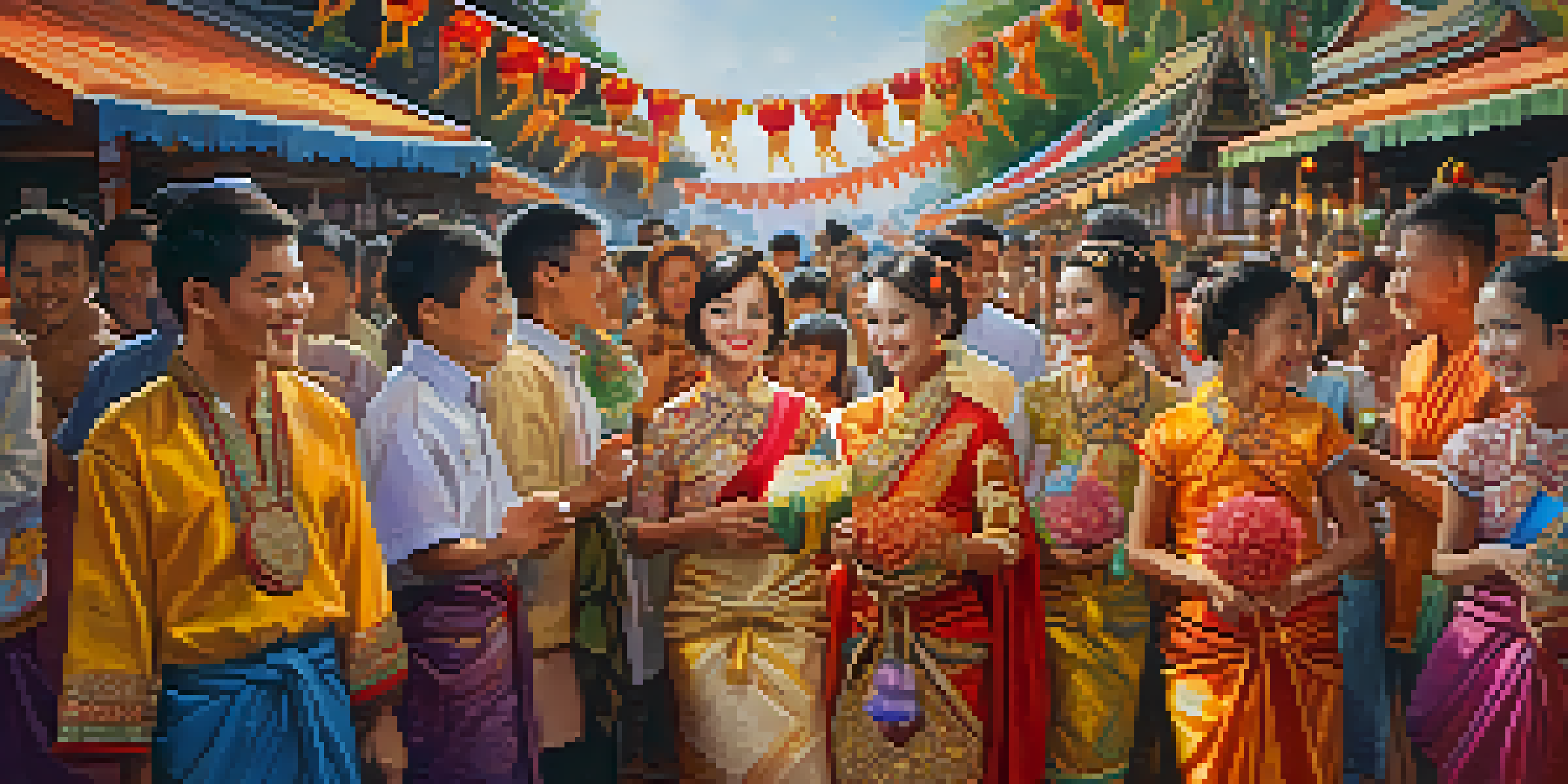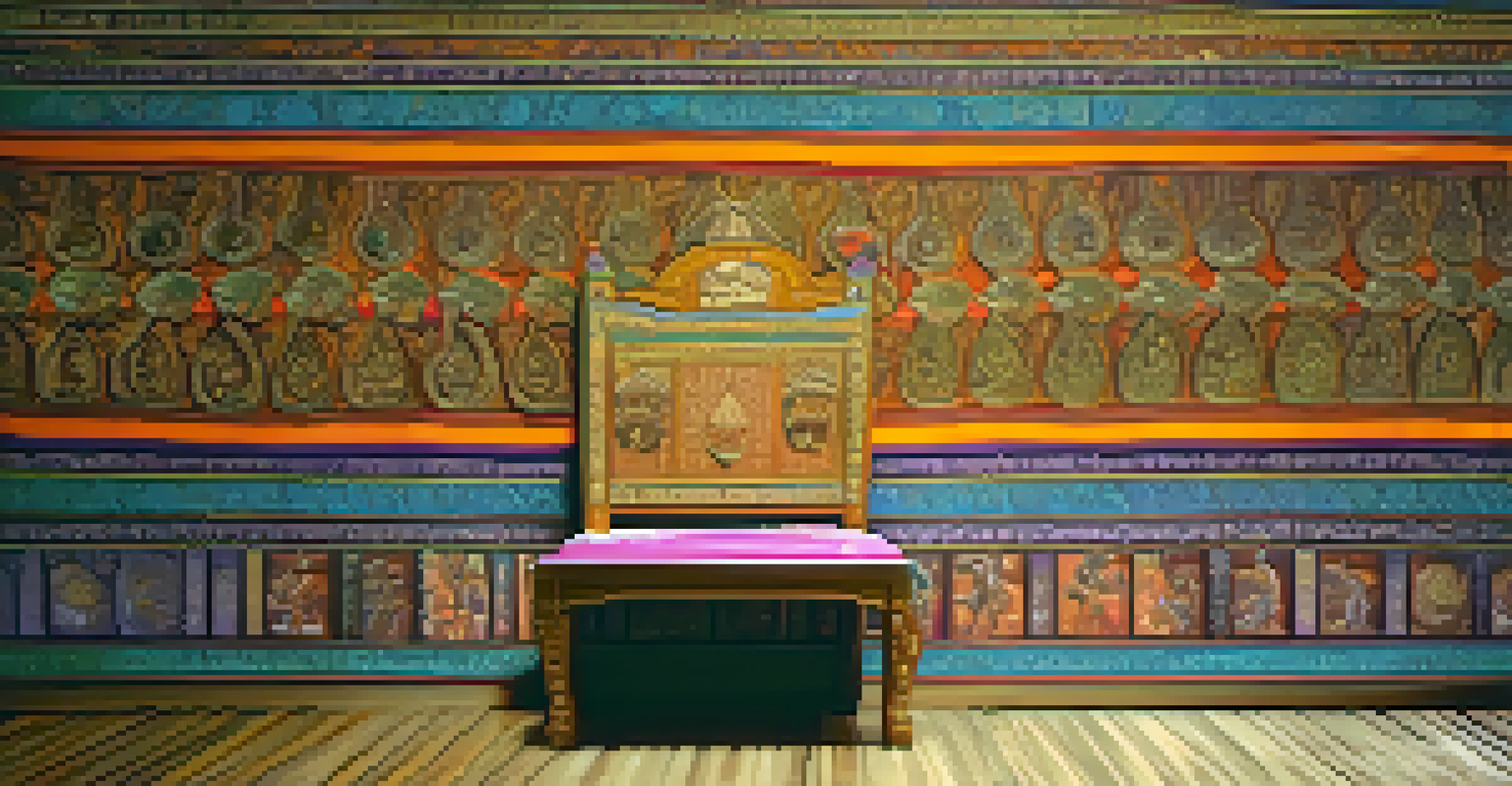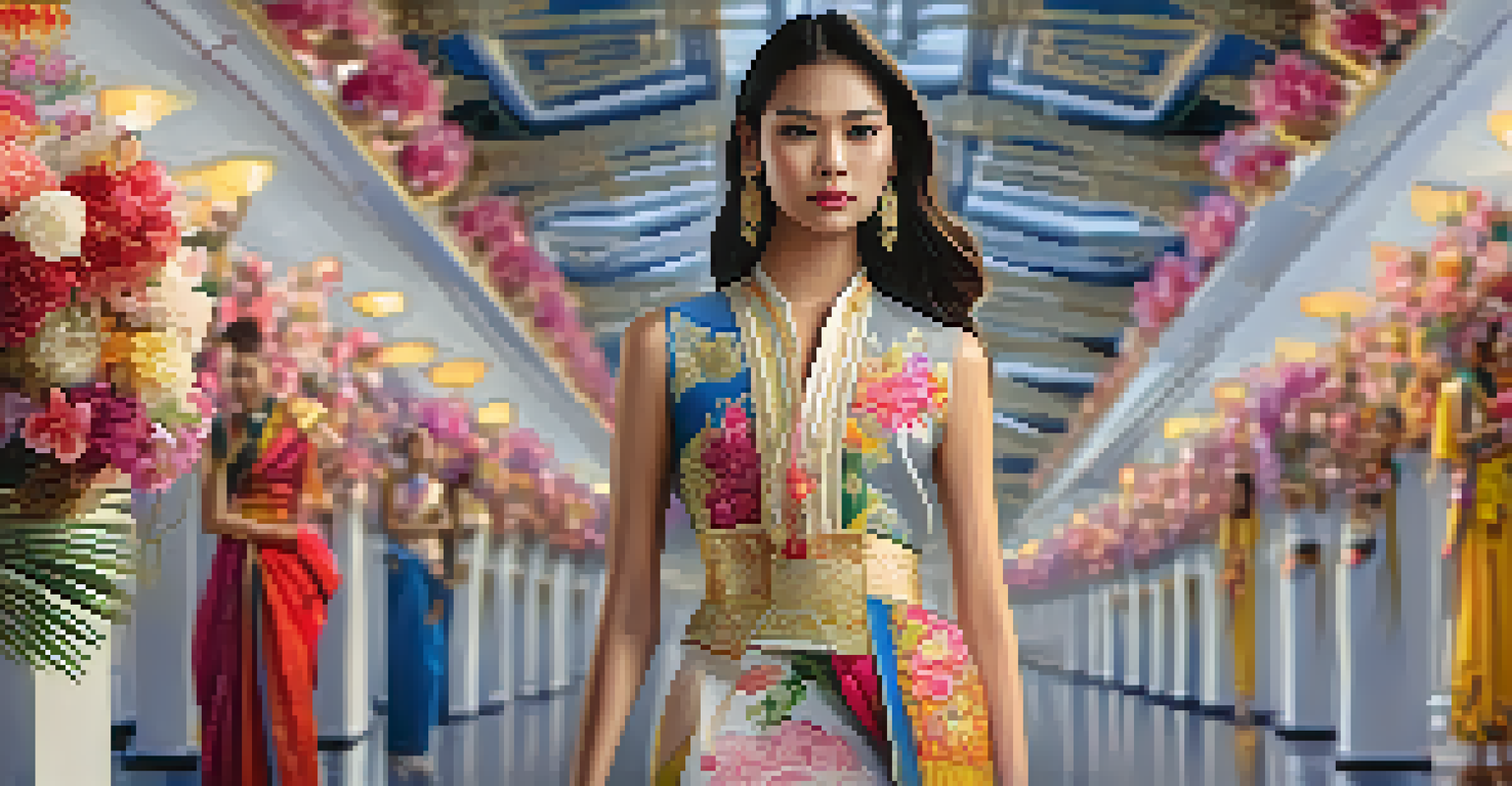The Evolution of Thai Dress: From Past to Present

The Origins of Traditional Thai Dress in History
Thai dress has deep roots in the country's history, dating back to ancient times. The traditional attire was heavily influenced by the diverse cultures that interacted with Thailand, including Indian, Chinese, and Khmer cultures. These influences shaped the style, fabric, and function of clothing worn by the Thai people, reflecting their social status and regional identity.
Fashion is about something that comes from within you.
In early Thai society, garments were often handwoven from natural fibers like cotton and silk. These materials were not only practical but also symbolized wealth and status, especially when adorned with intricate patterns and designs. For instance, the traditional 'chut thai' attire showcases elaborate craftsmanship and vibrant colors that tell stories of Thai heritage.
As time progressed, the traditional dress evolved, but the essence of Thai identity remained intact. This evolution can be seen in the way clothing styles adapted to the changing climates, customs, and even foreign influences, creating a rich tapestry of fashion that continues to tell Thailand's story.
Key Elements of Traditional Thai Clothing
Traditional Thai clothing is characterized by its distinct components, which vary by region and occasion. For men, the 'chong kraben'—a piece of cloth wrapped around the waist—pairs with a short-sleeved shirt, while women often wear a 'pha sin,' a long skirt made from beautifully patterned silk. These garments not only serve practical purposes but also convey cultural significance through their designs and colors.

Moreover, accessories play a vital role in completing the traditional look. Items such as the 'sangwan' (headpiece) for women and ornate belts for men enhance the overall aesthetic, showcasing the wearer's taste and status. The choice of accessories often reflects local traditions, making each outfit unique to its region.
Thai Dress Reflects Cultural Heritage
Traditional Thai clothing embodies the country's rich history and diverse cultural influences, showcasing craftsmanship and regional identity.
Additionally, the use of colors in Thai dress carries symbolic meanings. For example, specific colors are associated with particular days of the week, influencing how individuals choose to dress for special occasions. This attention to detail demonstrates the cultural importance placed on attire in Thai society.
The Influence of Royalty on Thai Fashion
Throughout history, Thai royalty has played a significant role in shaping the country's fashion landscape. The royal court often set the standards for elegance and style, influencing the clothing choices of the broader population. For instance, during the reign of King Rama V, western styles began to merge with traditional attire, leading to a unique blend that redefined Thai fashion.
The best part of fashion is that it can be an expression of who you are and where you come from.
One notable example is the introduction of the 'sanghati,' a type of silk garment that became popular among both the elite and common people. This adaptation highlighted the monarchy's influence in making certain styles accessible, thereby elevating local craftsmanship to new heights. The royal endorsement also encouraged artisans to innovate and refine their techniques.
Today, the legacy of royal fashion continues to resonate within Thai clothing, with many contemporary designers drawing inspiration from traditional royal attire. Events such as the annual Royal Barge Procession showcase this blend of heritage and modernity, allowing the public to appreciate the intricate designs that once adorned the royal family.
Modern Interpretations of Thai Dress
In recent years, there has been a resurgence of interest in traditional Thai clothing, particularly among younger generations. Designers are creatively reinterpreting classic styles, infusing modern aesthetics while maintaining cultural significance. This fusion of old and new is seen in fashion shows and events that celebrate Thai heritage.
For instance, the 'modern chut thai' has emerged as a popular choice for formal occasions, featuring contemporary cuts and fabrics while still honoring traditional elements. This approach not only preserves the cultural essence but also makes traditional attire more accessible and appealing to a global audience.
Royalty's Impact on Fashion Trends
Throughout history, Thai royalty has significantly influenced fashion, merging traditional styles with modern elements to elevate local craftsmanship.
Moreover, the rise of social media has played a pivotal role in promoting Thai fashion. Influencers and fashion enthusiasts showcase their unique styles, sparking interest in traditional attire and encouraging a dialogue about cultural identity. This dynamic exchange is revitalizing the appreciation for Thai dress, ensuring its relevance in the modern world.
Cultural Significance of Thai Dress in Festivals
Thai festivals are vibrant celebrations where traditional clothing takes center stage. Events like Songkran (Thai New Year) and Loy Krathong are not just about festivities; they are opportunities for people to don their finest traditional attire. Wearing these garments during such occasions fosters a sense of community and cultural pride.
During these festivals, the beauty of Thai dress is on full display, with thousands of people showcasing elaborately designed outfits. The attention to detail in each garment reflects the wearer's connection to their heritage, telling stories of family traditions and regional customs. This practice highlights the importance of preserving cultural identity amid globalization.
Additionally, the role of traditional dress in festivals serves as a reminder of the values and beliefs that shape Thai society. Through clothing, individuals express their respect for their ancestors and commitment to cultural continuity, making each festival a living testament to the country's rich traditions.
Sustainable Practices in Thai Fashion Today
As global awareness of sustainability grows, the Thai fashion industry is embracing eco-friendly practices. Many designers are shifting towards using natural materials and ethical production methods, reflecting a commitment to preserving both culture and the environment. This movement is crucial in ensuring that traditional craftsmanship is not lost in the face of mass production.
For instance, some brands are reviving ancient weaving techniques, which not only produce beautiful textiles but also support local artisans. By prioritizing sustainable practices, these designers empower communities and promote the continued use of traditional skills, contributing to both economic and cultural sustainability.
Sustainability in Thai Fashion
The Thai fashion industry is increasingly adopting sustainable practices, emphasizing eco-friendly materials and ethical production methods to preserve cultural heritage.
Moreover, eco-friendly fashion in Thailand often incorporates traditional designs, creating a harmonious blend of past and present. This approach not only appeals to environmentally conscious consumers but also fosters a deeper appreciation for the artistic heritage of Thai dress, ensuring its relevance for future generations.
The Future of Thai Dress: Trends and Innovations
Looking ahead, the future of Thai dress is poised to be an exciting blend of tradition and innovation. With advancements in textile technology and design, there’s potential for even more unique interpretations of traditional garments. This evolution will likely continue to attract a diverse audience, both locally and internationally.
As Thai designers gain global recognition, collaborations with international fashion houses are becoming more common. These partnerships can lead to innovative fusion styles that celebrate both Thai heritage and modern fashion trends. Embracing such collaborations will help to elevate Thai fashion on the world stage.

Ultimately, the continued evolution of Thai dress reflects the dynamic nature of culture itself. As younger generations engage with their heritage, they are likely to find new ways to express their identity through fashion, ensuring that Thai clothing remains a vibrant and integral part of the country's cultural landscape.